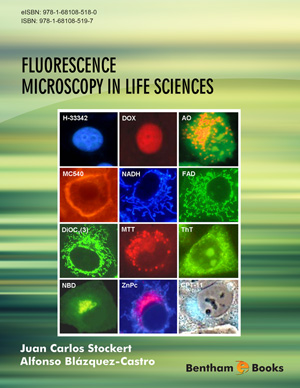Abstract
In this chapter, we will introduce the fundamentals and the main types of solid-state fluorophores in common use for fluorescence microscopy. The photophysics underlying the absorption and emission processes are universal and shared with other fluorophores already presented (e.g. organic molecules, see Chapters 2 and 3). However, fluorescent/luminescent solid state matrices present their own peculiarities, and it is convenient to introduce them in a generic way. As the reader will notice progressesing through the chapter, there is no common chemical basis for the presented solid-state fluorophores. The common theme is precisely solid state structures composed of a relatively large number of atoms (106-1012 atoms/structure) as compared to the low number of atoms (101-103 atoms/structure) of the fluorophores already presented in other chapters. The solid state is broadly divided into three categories according to the (increasing) electrical conductivity: insulators (dielectrics), semiconductors and conductors (metals). There are luminescent representatives within each of these categories. Therefore, we will begin the chapter by explaining the physical basis of electrical conductivity, which is directly related to the optical properties of the material, and then move forward to introduce the different subtypes of luminescent solid-state markers. To understand the electrical/optical properties of solids we will first present the band structure model.
Keywords: Band structure model, Carbon nanoparticle (C-dot), Conduction band, Conductor, Dielectric, Electroluminescence, Electron, Energy gap (Eg), Hole, Insulator, Lanthanide-doped nanoparticle, Light emitting diode (LED), Metal, Nanodiamond, Nanoparticle, Photoluminescence, Quantum dot (Qdot), Semiconductor, Silica nanoparticle (Si-dot), Solid-state physics, Valence band.






















